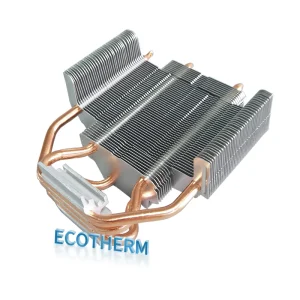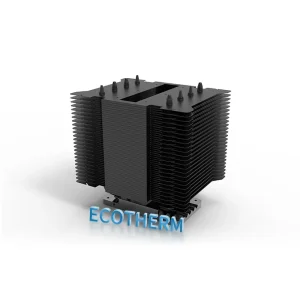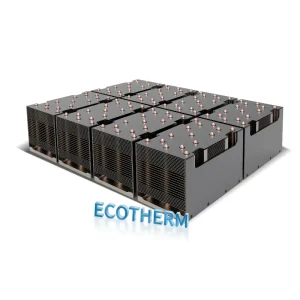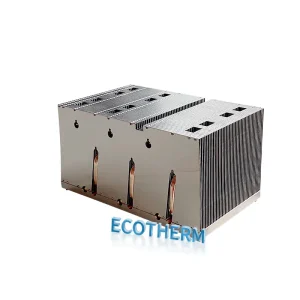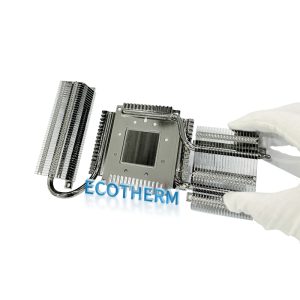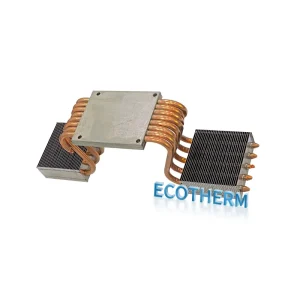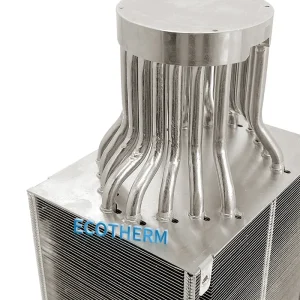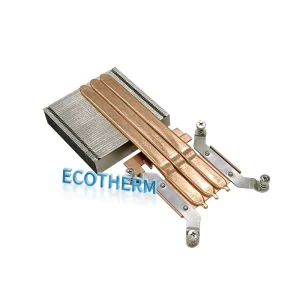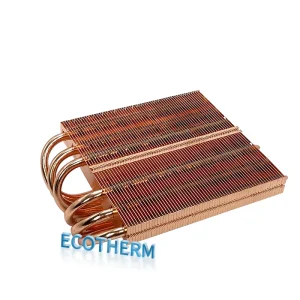Custom
Heat Pipe Heat Sink
Tailored Solutions for High-Power Applications
Free Custom Design
Free Thermal Analysis
Best Price Guaranteed
24 Hours Feedback
Explore Our Range of Tailored High-Power Designs
Heat Pipe Heat Sink Case Product Display
Single Copper heat pipe and copper zippere fin
Heat Pipe with Aluminum Plate
Skived Heat Sink with Heat Pipe, Hole for CNC
Multiple Heat Pipe Modules Customized
What is heat pipe
A heat pipe is a heat exchange component composed of a tubular shell and end caps. The tube is filled with an appropriate amount of working fluid, evacuated to a negative pressure, and hermetically sealed. At the heated end, the working fluid absorbs heat and evaporates into vapor, which flows to the cooling end, releases heat through condensation, and returns to the heated end via capillary action or gravity along the inner wall. This cycle continuously transfers heat from one end to the other.
As a thermal management device utilizing phase-change heat transfer technology, the heat pipe leverages the principles of thermal conduction and the rapid heat transfer properties of phase-change media. It achieves efficient heat dissipation through the evaporation and condensation processes of its internal working fluid.
Three parts of the heat pipe:
Shell: Usually made of metal, with an internal porous wick structure attached to the inner wall.
Wick structure: A capillary medium that enables the working fluid to move freely within the shell, independent of the heat pipe’s orientation.
Working fluid: A liquid with appropriate thermophysical properties (e.g., water, ammonia, or acetone).

Customize your own heat sink?
Heat Pipe
Heat pipe work principles
Heat transfer in a heat pipe relies on the phase transition of the working fluid. When one end of the heat pipe is heated, the working fluid absorbs thermal energy and vaporizes. The generated vapor flows to the cooler end, where it condenses and releases latent heat. The condensed liquid is then driven back to the heated zone via capillary forces (in the wick structure) or gravity, completing the cycle. This process enables rapid and efficient heat transfer from the heat source to the heat sink.

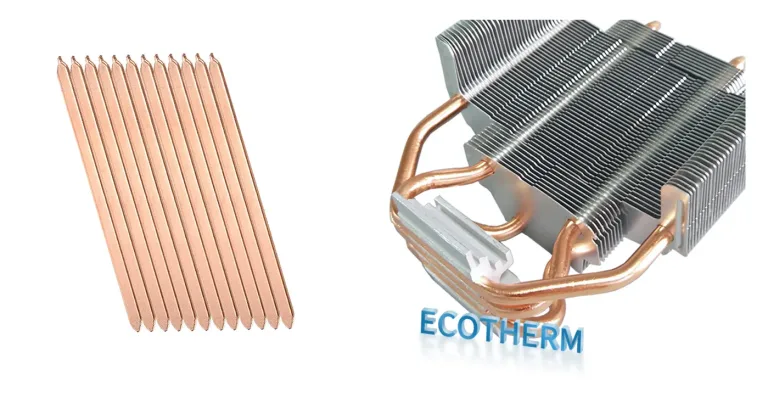
Characteristics of Heat Pipes:
(1) Exceptional Thermal Conductivity
(2) Superior Isothermal Properties
(3) Thermal Flow Reversibility
(4) Thermal Diode and Thermal Switch Behavior
(5) Environmental Adaptability
(6) High Reliability
(7) Cost-Effectiveness
High Power Cooling Solutions For Customized Heatsinks
Our customized cooling solution can be tailored to your project requirements, delivering the highest level of cooling efficiency under specific demands.
Heat Pipe Heat Sinks Cooling Module

A heat pipe heat sink represents a highly efficient cooling method consisting of essential elements such as heat pipes, heat sinks, and a cooling base.
During operation, the cooling base initially absorbs the heat generated by the device. This heat is subsequently transmitted through the heat pipes and released by the heat sinks, which facilitates optimal cooling performance.
Within the heat pipe, a specialized working fluid is utilized. As the heat causes this fluid to vaporize, the resulting vapor flows to the condenser section, where it releases heat. Capillary action then draws the fluid back to the heat source, completing the cycle and ensuring continuous cooling.
By engineering heat pipe heat sink modules with adaptability, they can deliver outstanding heat dissipation even in confined areas, thus guaranteeing dependable operation across various applications.ring reliable performance in various applications.
WHY choose Customized Heat Sink?
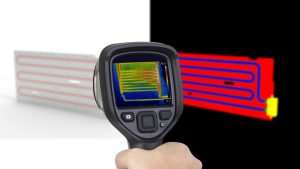
Optimized design based on specific application requirements
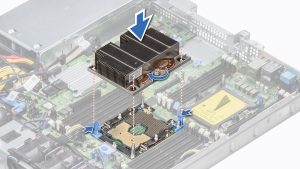
Maximized space utilization
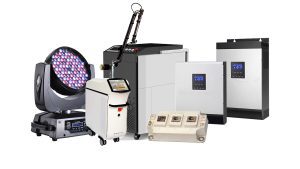
Flexible adjustment of materials and structures based on applications
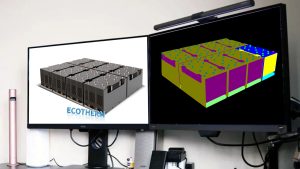
Cost savings through optimized heat dissipation performance:
Choose Another Type of Heat Sink
Custom designs for every unique need.
Heatpipe Cooling Module
Skived Heat Sinks (900mm*3meter)
Liquid Cold Plates
Vapor Chamber Heat Sink
Cold Forged Heat Sink(Pin Fin)
Extrusion Heat Sinks
Zippered Fin Heat Sinks
Folded Fin Heat Sinks
CNC Machining Parts
Stamping Parrs
Crafting Custom
Heatsinks for Your Needs
Email: Support@ecothermgroup.com
Feel free to get in touch with us to discuss your project specifics, request quotes, or inquire about our capabilities.
Our team of experts is dedicated to delivering top-notch quality and precision in every heatsink we produce
Free 24 Hours Feedback Thermal Analysis
Focus On Customized Cooling Solutions
22 Years Experiences OEM Factory
Send Your Drawing For Evaluation
CONTACT ECOTHERM
Please contact us to get in touch with our experts. We can provide design services for your project and thermal simulation services within 24 hours.
Note: Ecotherm does not provide a standard thermal model.We focus on providing professional design and production services for your new projects

